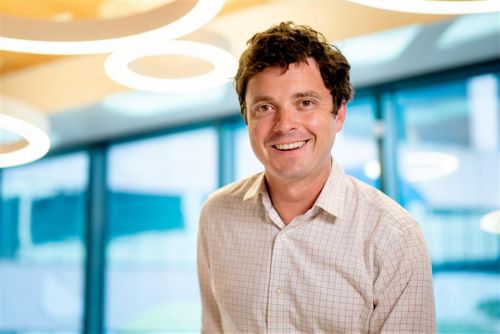St. Jude Family of Websites
Explore our cutting edge research, world-class patient care, career opportunities and more.
St. Jude Children's Research Hospital Home

- Fundraising
St. Jude Family of Websites
Explore our cutting edge research, world-class patient care, career opportunities and more.
St. Jude Children's Research Hospital Home

- Fundraising
Improvement science removes the ‘pebbles’ from clinicians’ shoes

An artistic rendering of a broken gear repaired with gold, evoking the concept of kintsugi, where fixing something improves it for the future, representing how improvement science seeks to make existing clinical environments and processes better.
Physicians, nurses and other clinicians are always busy while at work. They see patients, fill out paperwork, pursue continuing medical education and participate in a multitude of essential health care tasks, never feeling they have enough time in the day. When they encounter an inconvenience, such as poor notes during a patient handoff from one care team to another, they wish it were better but have no time to dedicate to improving the situation if it isn’t life-threatening. Taking the time to address these issues is the domain of improvement science.
“Many clinicians just put up with many small inconveniences, like pebbles in their shoes,” said Jonathan Burlison, PhD, St. Jude Improvement Science director, Office of Quality and Patient Safety. “If it is something big, the work stops and it’s addressed immediately because the threat to safety is clear. But these pebbles, which can seem minor, can also represent threats to health care delivery quality and patient safety and should be addressed.”

James Hoffman, PharmD, St. Jude Office of Quality and Patient Safety senior vice president and Department of Pharmacy and Pharmaceutical Sciences, talking to Jonathan Burlison, PhD, St. Jude Improvement Science director, Office of Quality and Patient Safety.
“Improvement science addresses practical problems encountered every day in the clinical environment,” said James Hoffman, PharmD, St. Jude Office of Quality and Patient Safety senior vice president and Department of Pharmacy and Pharmaceutical Sciences member. “It provides a data-driven approach to improving patient care and making clinicians’ jobs easier.”
St. Jude recognized the institution had an opportunity to improve handoffs between care teams, a common place for miscommunications to occur in hospitals. In some cases, clinicians did not give or receive all the necessary details about a patient’s care during handoffs, creating the potential for preventable adverse events. Therefore, the improvement science team helped clinicians to adopt a new standard format for handoffs across the hospital.
Identifying I-PASS as a potential improvement in the clinic
“We need to pick truly institution-wide projects that have quantitative data to guide them,” Hoffman said. “They can be from any domain of quality: safety, effectiveness, equity, patient-centeredness, timeliness or staff well-being. Because St. Jude provides high-risk and complex care, we often focus on safety.”
As all care teams hand off patients to other teams, improving these handoffs had the potential for a large cross-institutional impact, and its implementation could be measured. Therefore, the improvement science team chose to pursue it as a project. They selected the evidence-based I-PASS method for implementation, a structured format for conducting patient handoffs and transitions of care, which can be a vulnerable moment.

Jonathan Burlison, PhD, St. Jude Improvement Science director, Office of Quality and Patient Safety.
I-PASS stands for illness severity (I), patient summary (P), action list (A), situational awareness and contingency plans (S), and synthesis by the receiver (S). It creates a shared mental model to improve communication during patient handoffs, including important information about statuses, goals, concerns and contingency plans. The approach had already been validated at other hospitals, demonstrating a 30% reduction in preventable adverse events, making it that much more attractive to adopt.
Measuring improvement science’s impact
Once a project is chosen, in this case, I-PASS implementation and adaptation, the improvement science team identifies the metrics that will show if their interventions are working. “You can’t prove anything if you don’t measure it,” Burlison said. “We use a family of measures during the project: outcome, process and balancing measures.”
Outcome measures serve as everyone’s North Star, often related to the most important outcome. For I-PASS adoption, the primary outcome measure was adherence to the five components of I-PASS by clinicians during handoff, which has a demonstrated causal relationship with improved patient outcomes.
Process measures look at how and if staff perform specific tasks. In this case, adherence to I-PASS principles during handoffs could also be considered a process measure.
Balancing measures reveal the tradeoffs or unintended consequences of the new intervention. For I-PASS adoption, the researchers surveyed various clinicians, including nurses, physicians, diagnostic imaging technologists and others, to see if the intervention improved or decreased handoff quality.
Together, these measures give a comprehensive view of how well an intervention is working and where it may need to be adjusted, providing evidence of why health care staff should take the time to implement a new method or approach. “Clinicians respond well to data and rigorous methods,” Hoffman said. “We present them with convincing and thoughtful measures to demonstrate that we’re providing real solutions to the problems they’re facing every day.”
Implementing I-PASS with improvement science
After choosing the right metrics, the team begins the process of improving the clinical issue selected. For I-PASS, they worked with multiple departments, ranging from inpatient nursing to radiology, partnering with clinicians in each setting. The allied groups then adapted the method to their local contexts, as the original version was created for physician trainees, who have different needs than other health care professionals.
“Hospitals have many handoff contexts, and I-PASS appeared to be broad enough to adapt beyond physician trainees,” Burlison explained. “We prioritized handoff settings based on frequency and potential for preventable patient harm, then partnered with the care teams to co-design and test adapted versions of I-PASS.”
Their results, published in Pediatric Quality & Safety, show I-PASS improved patient handoffs, noting a 40% reduction in perceptions of handoff-related errors among inpatient nurses. Overall adherence to I-PASS was greater than 75% for all departments, with imaging/procedure staff’s handoff reaching 89% adherence. Most clinicians throughout the institution responded that I-PASS improved the hospital’s general handoff performance and their personal handoff execution. The effort was so successful that it led to improvements in handoff communication with remote clinics affiliated with St. Jude, also published in Pediatric Quality & Safety.
Improvement science is the scientific method to improve health care quality
I-PASS adoption at St. Jude demonstrates the value of using improvement science to improve the circumstances in which clinicians provide care. The science’s utility is portable to other circumstances, as it is a method designed to address many different issues. For example, the team is currently working on an ongoing project to reduce bloodstream infections and another project to improve flu vaccination education for patients and families. These projects exemplify how diverse quality improvement projects can be, and each has seen some success from applying improvement science principles.
“We use the same scientific method used in all other sciences to improve the clinical environment,” Burlison said. “It is a structured way to identify opportunities to improve, then test them using repeated measures to evaluate their impact and adjust until we’ve addressed the issue at hand.”
“Put simply, improvement science is the science of making our clinicians’ jobs better,” Hoffman concluded. “It is the science of helping them do the most important thing: give our patients the best care possible.”






